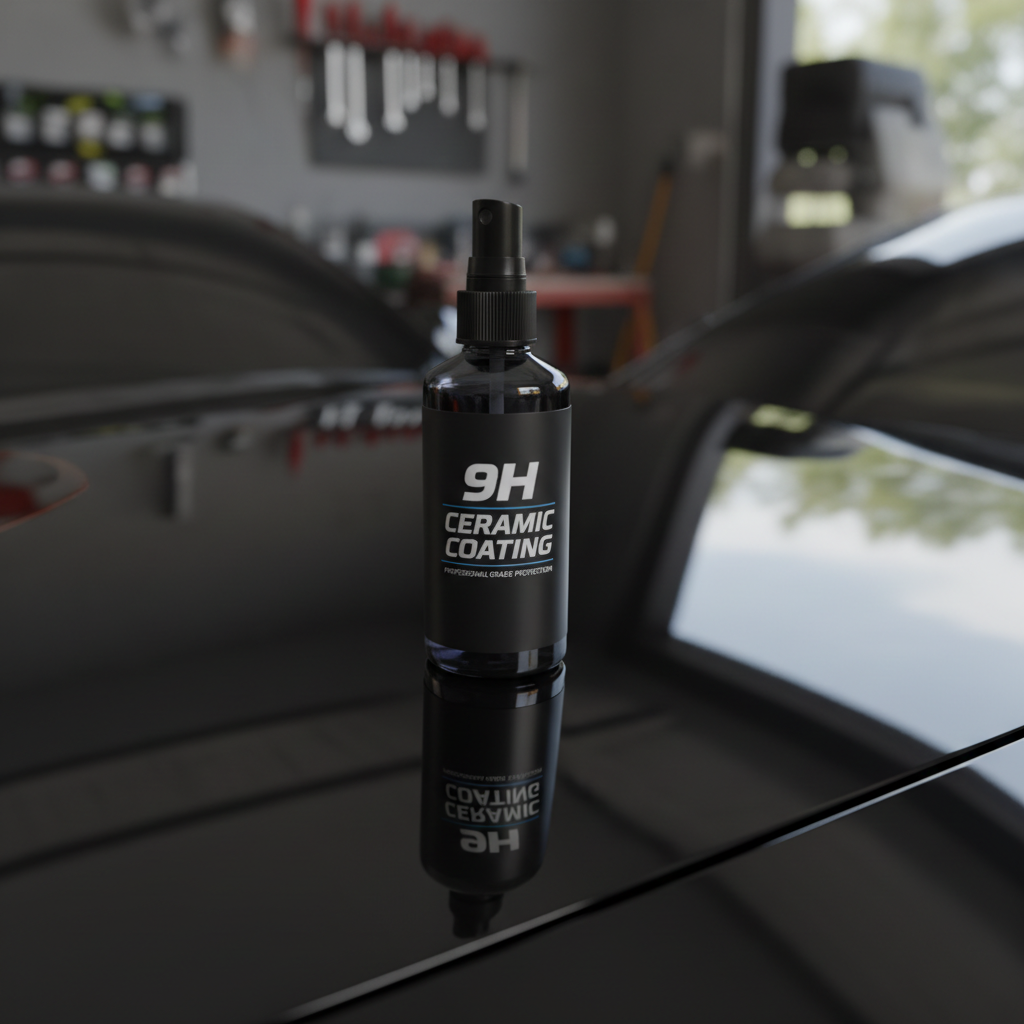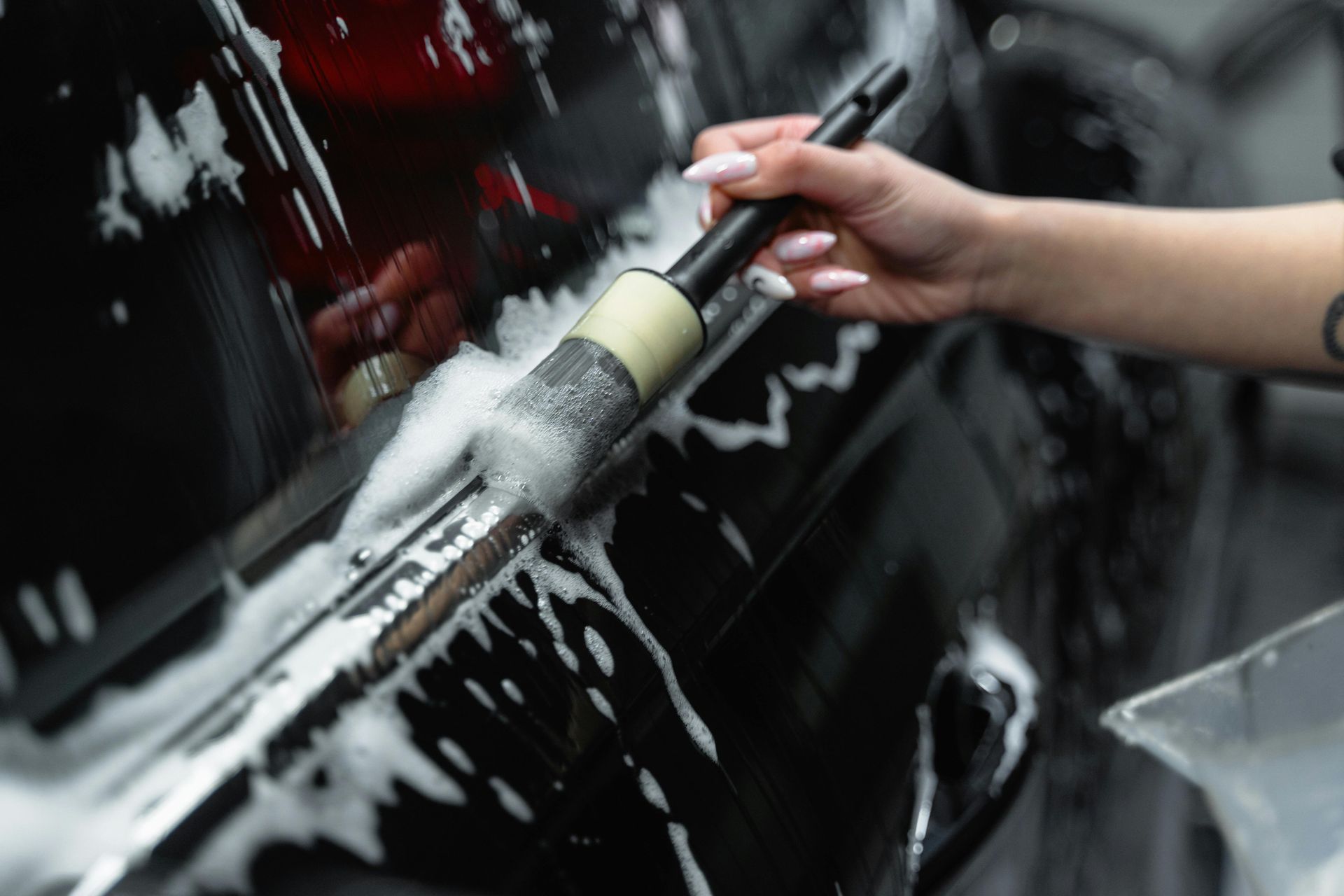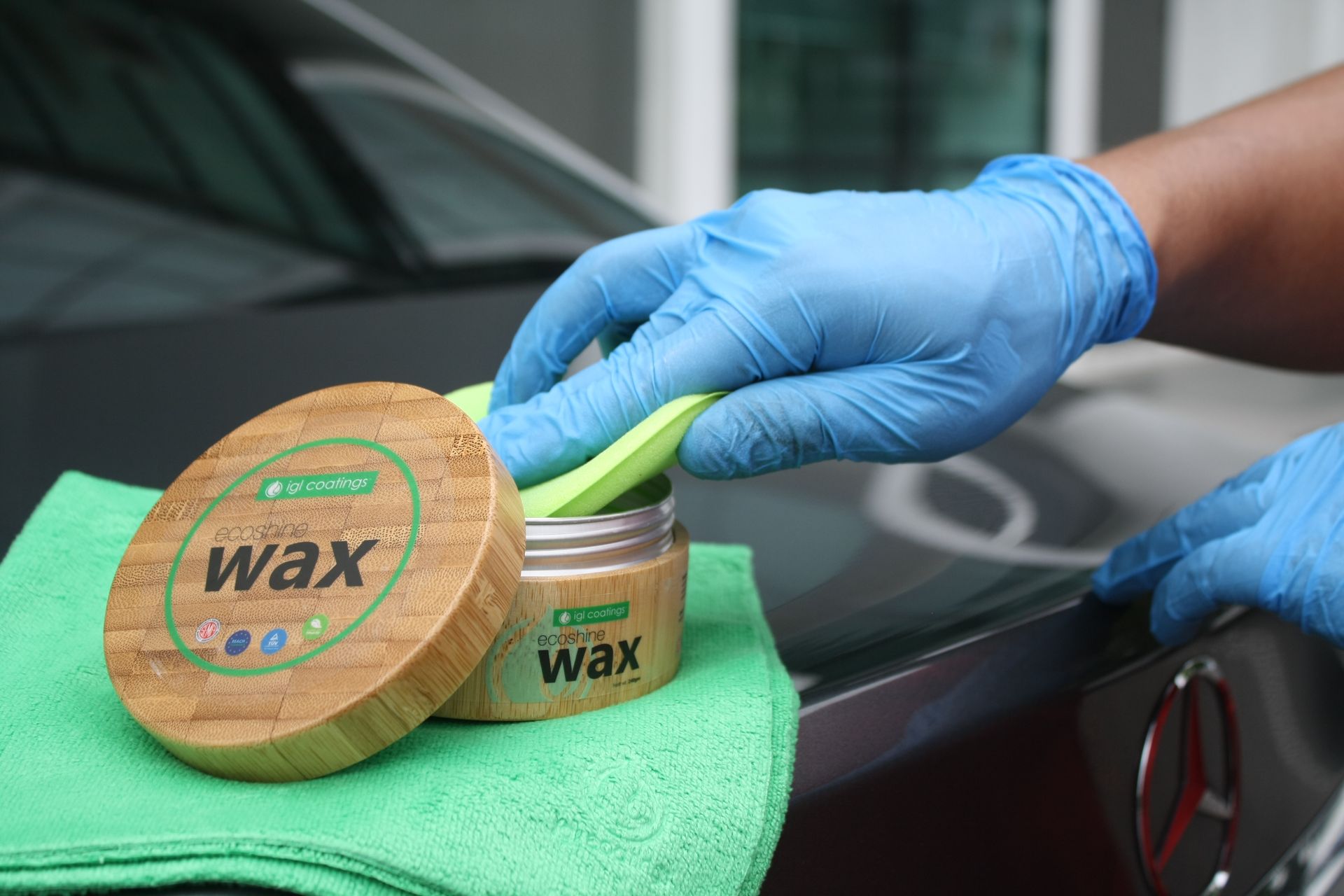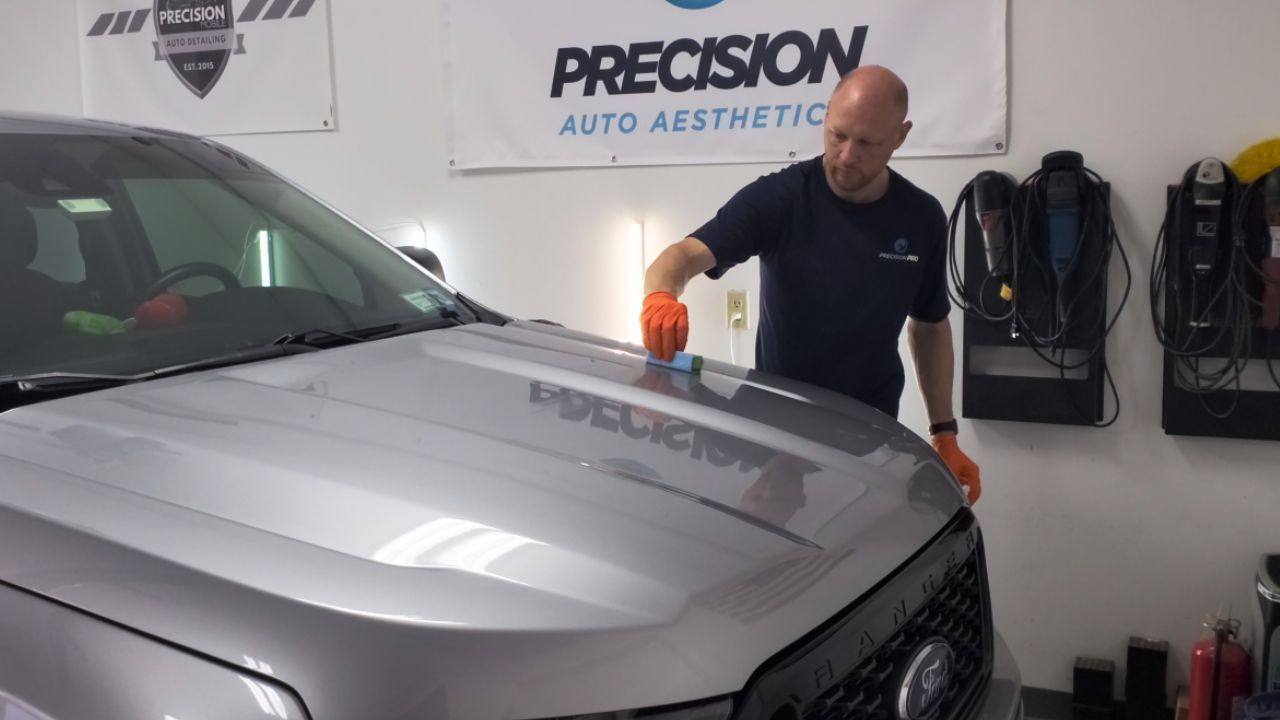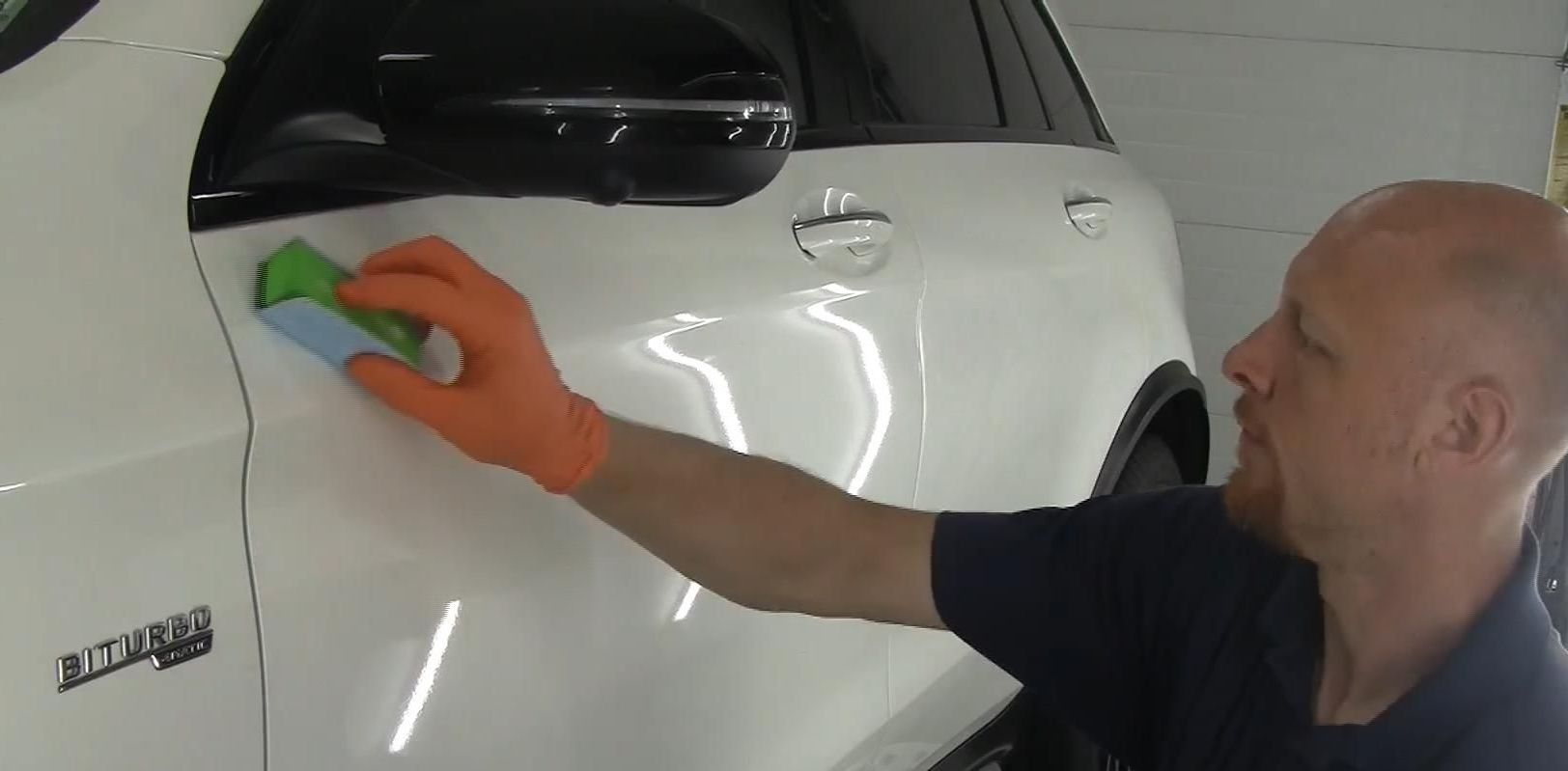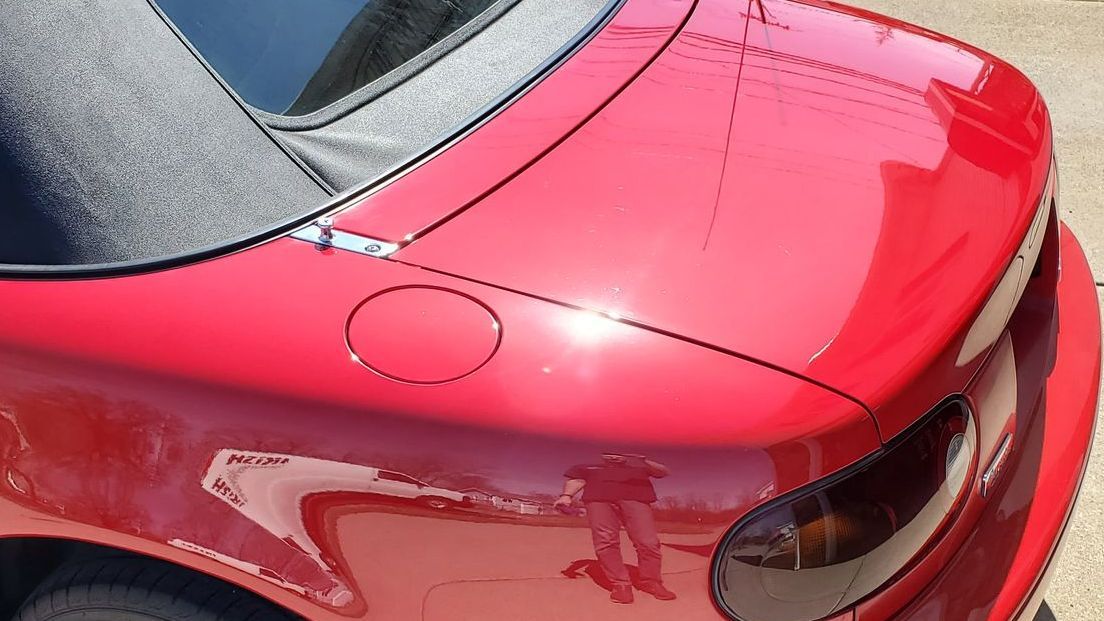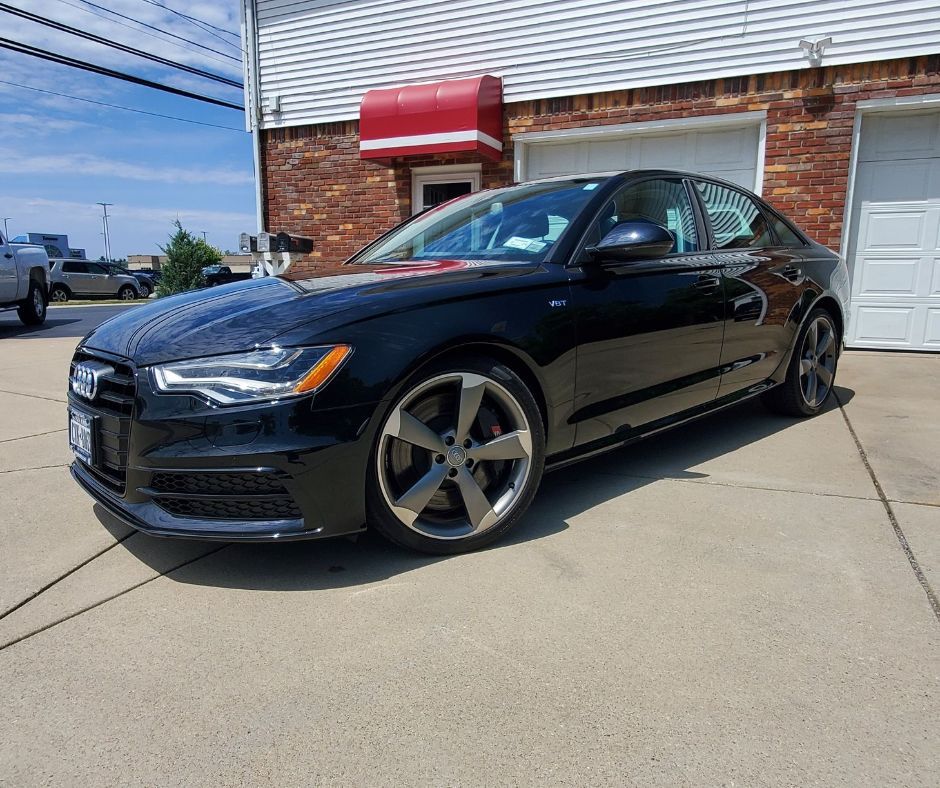The Ultimate Guide to Ceramic Coatings
Ceramic coatings are popular in car care because they protect your vehicle's paint and keep it looking good for years.
However, the hype can make it confusing to understand what a ceramic coating is and how it works.
This guide will explain everything from the basics to the benefits, types, application methods, and maintenance tips.
Whether you're a car lover or just want to maintain your vehicle, this guide has you covered.
Key Takeaways
- Ceramic coatings provide long-lasting protection against environmental damage.
- They enhance the gloss and shine of your vehicle's paint.
- Maintenance is easier with ceramic coatings; dirt and water slide off more easily.
- Different types of ceramic coatings are available, including traditional liquids and sprays.
- Understanding the application and maintenance process is key to maximizing the benefits of ceramic coating.
Understanding Ceramic Coating
What Is Ceramic Coating?
You've likely heard the term "ceramic coating." It's a liquid polymer applied to your car's exterior. It forms a chemical bond with the factory paint. I like to call it 'wax on steroids.'
It's designed to protect your car's paint from all sorts of nasty stuff, like UV rays, bird droppings, and bug guts.
Ceramic coatings bond to the paint, unlike wax, which just sits on top. This makes ceramic coatings last much longer.
The main ingredient is silicon dioxide (SiO2). Though you'll find titanium dioxide, like in our Pro Coating.
Once cured, it hardens into a very strong protective layer on your vehicle.
How Does It Work?
So, how does this stuff actually work?
It's all about the chemical bond. When you apply a ceramic coating, it fills in the microscopic pores in your car's paint.
This creates a slick, super-smooth, hydrophobic surface. Hydrophobic means it repels water, which is why water forms beads on a coated car.
This slick surface also helps carry away dirt and grime, making your car easier to wash.
Also, it's tougher than wax or sealant. It's not bulletproof, but it's a lot better than nothing!
Common Misconceptions
Ceramic coatings might seem magical, but let's clear up some myths:
- Ceramic Coatings Protect Against Everything: Nope. While they're tough, they're not invincible. They can still get scratched or damaged. So, be careful.
- You'll never have to wash your car again: Wishful thinking! Ceramic coatings do help make washing your car easier. You still need to wash it regularly to keep it looking great.
- Application is super easy: it's not rocket science. But it's also not as simple as slapping on some wax. Proper prep and application are key to getting the best results. If you mess it up, you might end up with streaks or uneven coverage.
"Ceramic coatings are a great way to protect your car's paint and keep it looking shiny, but they're not a miracle cure. They require proper application and maintenance to get the most out of them. Don't believe all the hype you hear – do your research and understand what they can and can't do."
There's a lot of bad information around, I have a video on ceramic coating myths to help dispel some of them.
Benefits of Ceramic Coating
So, you're thinking about getting a ceramic coating? Good choice! Let's break down why ceramic coatings for cars are such a big deal.
Long-Lasting Protection
Forget about waxing every few weeks. Ceramic coatings offer way more durable protection. We're talking years, not months, if you take care of it.
- Shields against UV rays that fade your paint.
- Resistance from everyday wear and tear.
- Protects from chemical stains and etching.
"Where wax and sealants are only for looks, ceramic coatings go one step further. Now, you have something that offers some chemical protection from bug guts, bird droppings, etc. Something wax and sealants can't do."
Enhanced Gloss and Shine
Okay, who doesn't want their car to look amazing? A ceramic coating gives your car that glossy, showroom-ready look.
It makes the paint pop and adds depth you just can't get with regular wax. Plus, that shine lasts way longer. It gives a shiny, smooth surface, boosting the depth and clarity of your paint job.
As a result, it looks newer and more vibrant. You'll be turning heads everywhere you go!
Easy Maintenance
Sick of washing and waxing every weekend? Can't seem to find the time to wax/sealant your vehicle?
Ceramic coatings make car care a breeze. Because of the slick surface coatings create, dirt and grime are easier to clean off. This means less time scrubbing and more time enjoying your ride.
Ceramic coatings are as close to a one-and-done as you can get. This saves you time and energy having to wax or seal your vehicle after every couple of washes.
Plus, you won't need to polish or deep clean as often. But how long do ceramic coatings last, you ask? With proper care, you're looking at years of easy maintenance.
- Hydrophobic properties repel water and dirt.
- Reduces the frequency of car washes.
- Makes removing bugs and stains easier.
So, ceramic coatings are worth it if easy care.
For a complete step-by-step approach to maintaining your ceramic coating investment, check out this IGL Coatings guide:
How to maintain ceramic coatings
Types of Ceramic Coatings
Ceramic coatings aren't just one size fits all.
There are actually a bunch of different types out there, each with its own set of pros and cons. Knowing the differences can help you pick the right one for your ride.
Traditional Si02 Coatings
These are the OG ceramic coatings. They come in a liquid form, and you need to be carefully applied.
Here at Precision Auto Aesthetics we use IGL Coatings. Poly, Quartz+, and Kenzo which all give you years of shine, ease of maintenance, and protection.
The main ingredient in Poly and Quartz+ is silicon dioxide (SiO2). Kenzo uses Ti02 (Titanium Dioxide). Both form a super hard shell over your car's paint.
Applying these can be tricky. You must prep the surface carefully and be precise. But the result is a strong, lasting finish.
Spray-On Options
If you want something simple to use, spray-on ceramic coatings could be for you. They’re thinner and don’t last as long as the liquid. But they’re much more convenient.
Products like IGL Premier and Dr. Beasley's LS-10 are good examples.
You just spray it on and wipe it off. Perfect for a quick boost of protection and shine without all the fuss.
Be aware, even though it may say 'ceramic' on the bottle doesn't mean it compares or has as much 'ceramic' in it as the products mentioned above.
Graphene Coatings
Graphene coatings are a new take on ceramic coatings.
They mix the benefits of regular ceramic coatings with the added strength of graphene oxide. This means you get a coating that's not only shiny and protective but also extra tough.
Some companies offer full graphene coatings. Others, like IGL Coatings, use graphene to strengthen their coatings.
However a ceramic coating is made, the most important thing is how it performs.
The science behind ceramic coating hardness and what those 9H ratings really mean is explained in detail here: Ceramic coating hardness
Applying Ceramic Coating Like a Pro
So, you're ready to apply a ceramic coating like a pro? Awesome!
It's not rocket science, but it does take some patience and attention to detail.
Here's the process so you can get that showroom shine.
Preparation Steps
First things first, prep is key. Seriously, don't skip this part. A bad prep job can ruin the whole thing. Think of it like painting, you wouldn't paint over a dirty wall, right? Same deal here.
- Wash your car. Use quality car soap and the two-bucket method. Thoroughly clean every surface to be coated.
- Decontaminate the paint. This often means using a clay bar or mitt. They help clear away stubborn dirt, such as brake dust and industrial debris. You most likely will need an iron remover to remove embedded iron deposits.
- Paint correction (if needed). Polish your paint if it has swirls, scratches, or other flaws. This is where paint correction (making your paint shiny) comes in. If you're not comfortable using a machine polisher, it might be best to leave this to a pro.
- Wipe down with a panel wipe. This gets rid of leftover polishing oils or residue. Now, the surface is clean, which helps the coating bond.
"Proper prep is the most important step. It ensures the ceramic coating bonds correctly and provides the best possible protection and shine. Don't rush this process!"
Understanding when paint correction is necessary can be tricky. This expert breakdown explains the process: What is paint correction: do you need it
Application Techniques
Okay, now for the fun part – applying the coating!
Check the instructions that come with your coating. They have the best directions for that product.
Here's a great video so you get the general idea of how to apply a coating, Applying a Ceramic Coating
But here's the general idea:
- Work in small sections. Think 2x2 feet. You don't want the coating to dry before you have a chance to level it.
- Apply the coating to an applicator pad. Usually, it's a suede or microfiber pad wrapped around a foam block.
- Apply the coating in a crosshatch pattern. This ensures even coverage. Don't be shy, but don't overdo it either.
- Level the coating. After a minute or two (again, check your product's instructions), use a clean microfiber towel to wipe off the excess coating. You're not trying to remove all of it, just level it out so it's even and streak-free. Follow up with a second towel for a final wipe.
- Inspect your work. Use a good light source to check for any high spots or streaks. If you find any, wipe them off immediately. Pro Tip: Use diffused lighting. Shine a light onto a white surface and look at the reflection of that white surface on your paint (see photo below)

Curing Process
So, you've applied the coating. Great! But you're not done yet. The coating needs time to cure, which means it needs to harden and bond to the paint. Here's what you need to do:
- Keep the car dry. For at least 24 to 48 hours, avoid getting the car wet. That means no rain, no washing, no nothing. Some coatings need longer cure times. So, be sure to check the instructions.
- After the initial cure time, your vehicle can get wet but we still need to keep any chemicals off it. Which leads me to the last point.
- Don't wash the car for at least a week. This gives the coating plenty of time to fully harden. After that, you can wash it as usual, but be sure to use a pH-neutral car soap.
And that's it! With some patience and care, you can apply a ceramic coating like a pro. Now you can enjoy that lasting protection and shine.
Maintaining Your Ceramic Coating
Okay, so you've got that sweet ceramic coating on your ride. Now what? It's not a 'set it and forget it' kind of deal.
You gotta show it some love to keep it looking its best and lasting as long as possible. You wouldn’t leave your pricey sneakers out in the rain, would you? Same principle here.
I go into a little more detail on maintenance here: Maintaining Your Ceramic Coating
Cleaning Tips
Alright, let's talk about cleaning.
The golden rule is to be gentle. Skip the harsh chemicals and tough sponges. Those are a ceramic coating's worst nightmare.
Use a pH-neutral soap. It’s the best choice and won’t damage the coating.
And always, always hand wash. Automatic car washes with those spinning brushes? Hard pass. They can scratch and swirl your coating. This ruins the whole purpose.
Here's a quick rundown:
- Use pH-neutral soap.
- Hand wash only with a microfiber mitt.
- Rinse thoroughly to avoid water spots.
- Dry with a clean, soft microfiber towel.
"I've found that washing every couple of weeks is a good rhythm. It keeps the dirt and grime from building up and potentially damaging the coating. Plus, it keeps your car looking fresh!"
Avoiding Common Mistakes
Alright, so you know what to do, but what about what not to do? Here are common mistakes that can ruin your ceramic coating:
- Avoid harsh chemicals: Stick to gentler options.
- Skipping washes: Letting dirt sit for too long is a no-go.
- Using abrasive materials: Sponges and brushes are the enemy.
- After washing your car: Dry it well to avoid water spots.
- Parking under trees: Tree sap and bird droppings can be tough on the coating.
Reality check
Despite what you may have heard, ceramic coatings are not scratch-proof. I go as far as saying they're not even scratch resistant.
Most of the swirls and scratches you see in your paint are coming from the washing and drying. Either from dirty wash mitts or dry without a quick detailer or something to protect the surface as you dry.
This can still happen even with a ceramic coating, so don't be fooled.
"Ceramic coatings are more about the shine and chemical protection than actually physical protection."
Again, be gentle.
Use clean water as much as possible, clean wash mitts and towels, two-bucket method, grit guards in your buckets, pre-rinsing heavily soiled vehicles, and a quick detailer or rinse aid when drying.
"Once you've washed and rinsed off your car, you've rinsed off an lubrication from the soap. Water isn't a lubricate. Use a quick detailer or rinse aid for lubrication while drying your vehicle."
When to Reapply
So, how do you know when it's time for a fresh coat?
Most people believe it's when water stops beading up on the surface. This isn't always the case.
Water beading is a feature of ceramic coatings. In most cases, it can be restored.
A better sign is if you're having a hard time washing the vehicle. Bug guts become more difficult to remove, etc.
I talk about this a little in Myth #3 in this YouTube video:
Cost Considerations for Ceramic Coating
Professional vs. DIY
Okay, so you're thinking about getting a ceramic coating. One of the first things you likely consider is the cost, right?
A big factor here is whether you go the professional route or try to DIY it. Hiring a professional to complete the task can cost between $800 and $2000, or even more. Keep in mind, you're paying for expertise and a guaranteed job.
So, doing it yourself can save you a lot upfront. You'll only be paying for the cost of the coating kit and any tools you might need.
But, be warned, you will find it's not as easy as it looks. If you mess it up, you might end up paying even more to fix it.
Plus, your time is worth something, right?
Factors Affecting Price
So, what makes the price of a ceramic coating vary so much? A few things:
- Paint Condition: If your car's paint looks good, prep work will be easier. If your car looks like it survived a sandstorm, be ready to pay more for paint correction.
- Number of Layers: Some detail shops use several layers of coating. More layers = better coating = more money.
- Larger Vehicles: Larger vehicles have more surface area. This means they need more product and take more time to cover.
- Coating Longevity: This is a key factor that affects the price. The longer a coating lasts, the higher the price.
"It's important to remember that the cheapest option isn't always the best. A poorly applied coating is worse than no coating at all. You might save a few bucks now, but end up with swirl marks and a finish that looks worse than before."
Long-Term Value
Okay, so ceramic coating costs more than waxing or sealants. No doubt about it.
But think about it this way: how often do you need to wax your car? Every few weeks or months, right? A good ceramic coating can last for years.
That means less time and money spent on maintenance in the long run.
It also protects better against UV rays and other harmful things that can damage your paint.
So, while the initial cost is higher, the long-term value can definitely make it worth it. It's like investing in a good pair of boots instead of buying cheap ones every year.
You might pay more upfront, but they'll last longer and keep your feet happier.
Ceramic Coating vs. Other Protection Methods
Waxing vs. Coating
Okay, so you're trying to figure out if ceramic coating is worth it, right? Let's talk about waxing.
Waxing is like the old-school method. It's been around forever, and it's relatively cheap and easy to do yourself.
You can get a decent shine, and it'll protect your paint for a little while. But here's the thing: wax doesn't last.
We're talking weeks, a month if you're lucky. It melts in the sun and washes away in the rain. It disappears faster than free pizza at a party.
Ceramic coatings are like the modern upgrade. It costs more and requires extra effort to apply. But it lasts much longer—think years instead of weeks.
Wax is ineffective against bug guts, bird droppings, tree sap, etc. Anything that can eat into your vehicle's paint, chemical etching.
Ceramic coatings can and do prevent this chemical etching because of their chemical resistance.
Wax is only a layer that sits on top of your paint. This is why it doesn't last more than a few weeks at best.
Wax is still a great product and has it's place in car care. I have cans in the shop for the classic cars that come in that benefit more from that traditional carnuaba wax.
It pails in comparison to sealants and ceramic coatings, especially on modern vehicles and paint.
Sealants Explained
Sealants sit between wax and ceramic coating. They're synthetic polymers. They are more durable than wax, but again, not as durable as ceramic.
A sealant usually provides a few months of protection. They're also easier to apply than wax. Simple spray on, wipe off.
Sealants are a smart option for durability.
They give a nice shine and repel water like wax and coatings.
Sealants offer good protection at a reasonable price. They are a great pick for budget-savvy shoppers.
The table below gives you all the Pros and Cons of all three products.
Pros and Cons of Wax, Sealants, and Ceramic Coatings:
| Feature | Wax | Paint Sealant | Ceramic Coating |
|---|---|---|---|
| Longevity | ❌ Short (1–3 months) | ⚠️ Moderate (3–6 months) | ✅ Long-term (2–5 years depending on type and maintenance) |
| Ease of Application | ✅ Easiest – apply and buff off by hand | ✅ Easy – often spray-on or wipe-on | ❌ Complex – requires paint prep, sometimes curing time, and pro install |
| Gloss & Shine | ✅ Deep, warm glow | ✅ Glossy, synthetic-like shine | ✅ High-gloss, mirror-like finish with depth |
| Surface Protection | ⚠️ Basic – repels water, mild UV resistance | ✅ Better – shields against UV, water spots, and light contaminants | ✅ Superior – resists UV, chemicals, oxidation, bird droppings, etc. |
| Slickness (Hydrophobic Properties) | ⚠️ Good at first, but fades quickly | ✅ Strong and lasts longer | ✅ Excellent and long-lasting |
| Durability | ❌ Least durable – wears off with washes/weather | ⚠️ Better – withstands weather, some washing | ✅ Highly durable – bonds to paint, resists environmental abuse |
| Cost | ✅ Low | ✅ Affordable | ❌ High upfront cost (but long-term value) |
| Maintenance | ⚠️ Needs frequent reapplication | ⚠️ Reapply every few months | ✅ Easy upkeep, especially with maintenance washes |
| DIY Friendly? | ✅ Yes – very beginner friendly | ✅ Yes – minimal prep needed | ❌ Not recommended – professional application advised |
| Best For | • Car enthusiasts who enjoy waxing regularly • Show cars or weekend drivers | • Daily drivers who want longer protection than wax | • Owners who want long-term protection, minimal upkeep, and premium results |
Which Is Right for You?
So, which one should you choose?
It depends on your budget, time, and how much you value your car's look.
If you're on a tight budget and don't mind reapplying every few weeks, wax is a decent option.
If you want something that lasts a bit longer and offers better protection, a sealant is a good choice.
For the best protection and a lasting shine, choose ceramic coating. Just be prepared to spend more money and/or put in more effort. Consider these points:
- Budget: Wax is the cheapest, then sealant, then ceramic.
- Durability: Wax lasts for weeks. Sealant lasts for months. Ceramic lasts for years.
- Effort: Wax and sealant are easier to apply than a ceramic coating.
"Ultimately, the best choice depends on your individual needs and preferences. Think about what's most important to you – cost, durability, ease of application – and choose the option that best fits your situation. Don't be afraid to do some research and read reviews before making a decision. You can also look into PPF for the physical protection."
Ceramic coating is a top choice for protecting your vehicle. It beats wax and sealants.
Coatings provide a solid defense against chemical and UV damage. This keeps your car looking shiny and new for a longer time. To learn how ceramic coating can help your ride, visit our website for details!
Wrapping It Up
So there you have it! Ceramic coatings can transform your car.
They provide a shiny, just-waxed appearance and protect against dirt and damage.
Sure, there’s a bit of upkeep involved, but once you get the hang of it, it’s not too bad.
Not all coatings are the same. Knowing what you choose can save you trouble later.
If you're a car enthusiast or just want your vehicle to shine, consider ceramic coatings. Happy coating!
FAQ
What is ceramic coating?
Ceramic coating is a special liquid that protects your car's paint. It creates a hard layer that helps keep the car looking shiny and safe from dirt, scratches, and the sun.
How long does ceramic coating last?
With the right care, ceramic coating can last for several years. This means your car stays protected and shiny for a long time!
Can I apply ceramic coating myself?
Yes, you can apply ceramic coating yourself, but it requires careful preparation and technique. Many people choose to have it done by professionals to ensure the best results.
Is ceramic coating better than waxing?
Yes, ceramic coating is generally better than waxing. While wax can wear off quickly, ceramic coating provides longer-lasting protection and a deeper shine.
How do I maintain my ceramic-coated car?
To keep your ceramic-coated car looking great, wash it regularly with gentle soap, avoid harsh chemicals, and consider using special products designed for ceramic coatings.
What are the costs associated with ceramic coating?
The cost of ceramic coating can vary. Professional applications can be more expensive, but they offer great results. DIY options can save money but may require more effort. Check out my blog here on pricing and our Exclusive Ceramic Coating Pricing Calculator for more on cost.

